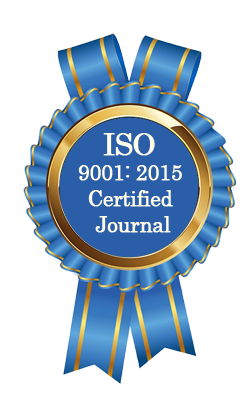| All | Since 2020 | |
| Citation | 105 | 60 |
| h-index | 4 | 4 |
| i10-index | 3 | 2 |
WJAHR Citation 
Login
News & Updation
Best Article Awards
World Journal of Advance Healthcare Research (WJAHR) is giving Best Article Award in every Issue for Best Article and Issue Certificate of Appreciation to the Authors to promote research activity of scholar.
Best Article of current issue
Download Article : Click here
Indexing
Abstract
PATTERN OF SKIN CANCER IN PATIENTS ATTENDING AL-YARMOUK TEACHING HOSPITAL FROM JANUARY 2021 TO DECEMBER 2022
*Rasha Wassef Omar, Farah Qahtan Mahgoob and Hiba D. Al-Ameri
ABSTRACT
Skin cancer is one of the most common forms of cancer globally. It’s primarily characterized by the uncontrolledgrowth of abnormal skin cells, this growth can lead to tumors, which are either benign (noncancerous) ormalignant (cancerous). Understanding the patterns of skin cancer involves an exploration of its types, causes, riskfactors, symptoms, diagnosis, treatment, and prevention strategies.[1] Skin cancer is broadly categorized into threemain types: Basal cell carcinoma (BCC), Squamous cell carcinoma (SCC), and Melanoma. BCC and SCC,collectively known as non-melanoma skin cancers, are the most common and are typically less aggressive.Melanoma, although less common, is more aggressive and likely to spread to other parts of the body. Basal CellCarcinoma is the most common type of skin cancer, it arises from the basal cells, located in the lowest part of theepidermis. BCCs often appear as raised, smooth bumps on sun-exposed areas like the head and neck. SquamousCell Carcinoma originates from the squamous cells, which are found in the upper part of the epidermis. It oftenappears as scaly, reddish patches, which may crust or bleed. Melanoma develops from melanocytes, the cellsresponsible for skin pigmentation. It is the deadliest form of skin cancer due to its tendency to spread(metastasize) to other parts of the body.[2,3] The primary cause of skin cancer is ultraviolet light radiation from thesun or tanning beds. Ultraviolet light radiation damages the DNA in skin cells, leading to mutations that can resultin cancer. Other risk factors include: fair skin, light hair, and eye color, history of sunburns, especially early inlife, excessive sun exposure, large number of moles or atypical moles, family history of skin cancer, andweakened immune system.[4] Skin cancer symptoms vary depending on the type of cancer but generally includechanges in the skin that persist for weeks and evolve over time. The signs to look for include: new growths orsores that do not heal, changes in existing moles (size, shape, color), itchy or painful lesions, and the appearanceof a scaly or crusty lesion.[5] Early detection of skin cancer is crucial for successful treatment. Dermatologists usevarious methods for diagnosis, including: Visual Examination by checking the skin for changes or abnormalities,dermoscopy : using a special magnifying tool to examine suspicious moles or lesions, or by taking biopsy(incisional or excisional) for histopathological study to confirm diagnosis.[6] Treatment options depend on the typeand stage of skin cancer. Common treatments include: Surgical Removal by excision of the cancerous tissue,mohs Surgery which is precise surgical technique used primarily for BCC and SCC, radiotherapy by using highenergyrays to destroy cancer cells or by chemotherapy: by using drugs to kill cancer cells. For skin cancer,topical chemotherapy may be used and immunotherapy by stimulating the immune system to fight cancer cells,Targeted Therapy: drugs that specifically target cancer cell mutations.[7] Preventive measures are key to reducingthe risk of skin cancer. These include: Avoiding excessive sun exposure, especially during midday, usingsunscreen with suitable sun protection factor, wearing protective clothing, hats, and sunglasses, avoiding tanningbeds and regular skin examinations by a healthcare professional especially if there is high risk factor.[8]
[Full Text Article] [Download Certificate]
